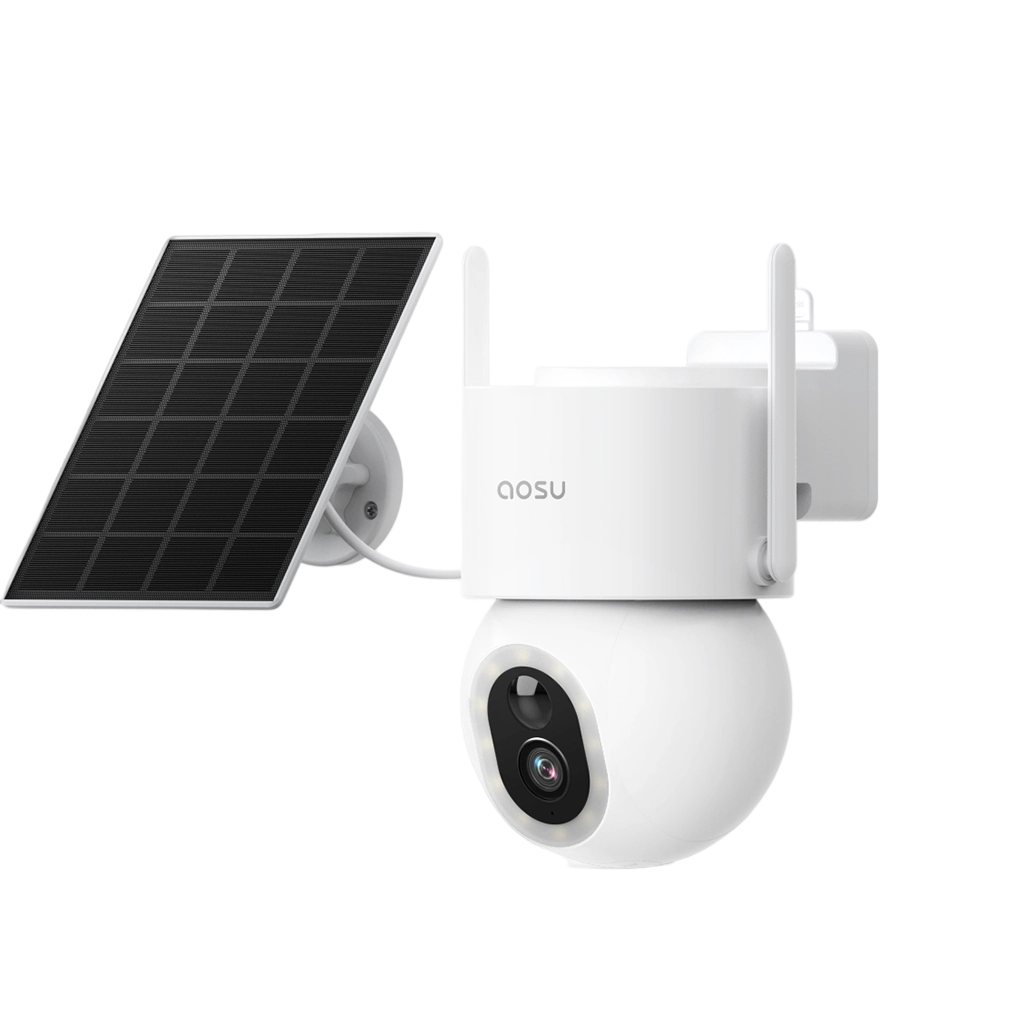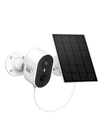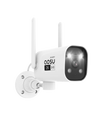September marks National Preparedness Month, a crucial time dedicated to emphasizing the importance of being prepared for various emergencies. While the focus often lies on general preparedness, integrating a robust home security system into your emergency plans can significantly enhance your readiness and safety. This blog will explore different types of emergencies, essential emergency supplies, and practical steps to prepare for disasters.
Different Kinds of Emergencies
Understanding the types of emergencies that could potentially affect your household is fundamental to effective preparation. Emergencies can be broadly categorized into natural and man-made disasters, each requiring specific responses.
Natural Disasters
-
Earthquakes: Sudden and intense shaking of the ground can lead to significant damage. Preparation involves securing heavy items, knowing how to protect yourself during a quake, and ensuring your home’s structural integrity.
-
Hurricanes: Characterized by strong winds, heavy rains, and potential flooding, hurricanes necessitate preparing for power outages, securing your home, and having an evacuation plan.
-
Floods: Whether caused by heavy rainfall, hurricanes, or dam failures, floods can cause substantial property damage. Key preparations include understanding flood risks and having a plan for moving to higher ground.
-
Tornadoes: These rotating columns of air can cause widespread destruction. Preparing for tornadoes involves identifying a safe room in your home and understanding the warning signs.
-
Wildfires: In areas prone to wildfires, preparing involves creating a defensible space around your property and having an evacuation plan in place.
Man-Made Disasters
-
Fires: Both natural and man-made fires can be devastating. Fire preparedness includes installing smoke detectors, having a fire escape plan, and keeping fire extinguishers handy.
-
Terrorist Attacks: Although less predictable, having a general emergency plan and staying informed about local alerts can enhance your readiness.
Emergency Supplies for Home
Once you’re aware of the types of emergencies you might face, assembling a well-rounded emergency supply kit is crucial. A comprehensive kit not only prepares you for immediate needs but also complements your home security system to ensure your family’s safety.
-
Water: Store at least one gallon of water per person per day for a minimum of three days. For extended emergencies, aim for a two-week supply.
-
Food: Non-perishable items such as canned goods, dried fruits, and ready-to-eat meals are essential. Ensure you have a manual can opener if needed.
-
First-Aid Kit: Your kit should include bandages, antiseptics, medications, and a first-aid manual. Regularly check and restock expired items.
-
Battery-Powered or Hand-Crank Radio: This device is vital for receiving weather updates and emergency alerts, especially during power outages.
-
Flashlight: A reliable flashlight with extra batteries is crucial for visibility during power disruptions.
-
Tools and Supplies: Include a multi-tool, duct tape, and plastic sheeting for emergency repairs and containment.
Steps to Prepare for Disasters and Emergencies
Preparation is key to effectively managing any emergency, whether it’s a natural disaster like an earthquake or a man-made event such as a power outage. Here’s a comprehensive guide to preparing for various emergencies.
1. Develop a Family Emergency Plan
Creating a family emergency plan ensures everyone knows their role and responsibilities during a crisis, integrating with your home security system to provide a coordinated and efficient response to emergencies.
Communication Plan
Create a clear communication plan to ensure everyone in your household knows how to stay in touch during an emergency. For example, in the event of an earthquake, having a communication plan ensures that family members who may be separated by debris or chaos can still connect.
Evacuation Plan
Map out multiple evacuation routes from your home, tailored to different scenarios. For instance, during a hurricane, knowing various escape routes can help you avoid blocked or dangerous areas. Practice these routes with your family and consider how your home security system can aid in quick exits, such as remotely unlocking doors if you need to evacuate.
Safe Room
Identify a safe room in your home, particularly for scenarios like tornadoes or chemical spills. This room should be well-stocked with emergency supplies and integrated with your security system to monitor any external threats. For instance, a safe room during a wildfire can be equipped with air filtration systems and monitored by security cameras to ensure it's secure.
Emergency Contacts
Compile a list of important contacts, including local emergency services, family members, and medical professionals. In the event of a power outage or natural disaster, this list will be crucial for quick communication and coordination.
2. Install Home Security Systems
-
Alarm Systems: Ensure your home security system includes alarms for intrusion, smoke, and carbon monoxide. For example, during an earthquake, a seismic alarm could alert you to structural damage or gas leaks, while smoke detectors help manage fire risks. Make sure your system is tested regularly and fully operational.
-
Surveillance Cameras: Install cameras to monitor your property and receive real-time alerts. For example, if a flood is imminent, home security cameras can help assess the situation outside your home and make informed decisions about evacuation. Surveillance footage can also be crucial for documenting damage for insurance purposes.
-
Smart Home Integration: Modern security systems often integrate with smart home devices, allowing remote control of lights, locks, and more. In the event of a power outage or when you’re away from home, smart systems can provide real-time updates and help manage essential functions like securing doors or activating emergency lighting.
-
Emergency Alerts: Configure your security system to send alerts to your phone or other devices. This is especially important during events like hurricanes or fires, where timely information can help you respond quickly to evolving situations.
3. Create a Home Safety Checklist
-
Secure Your Home: Implement safety measures such as anchoring heavy furniture and appliances to the walls, which is particularly important during earthquakes. Regularly check for fire hazards and ensure your smoke detectors are functional.
-
Fire Safety: Test and maintain your smoke alarms and fire extinguishers. Conduct regular fire drills with your family to practice evacuation routes and ensure everyone knows how to respond in case of a fire.
-
Flood Preparedness: Elevate electrical appliances and utilities to prevent damage during a flood. Consider installing sump pumps and flood sensors, which can be linked to your security system to provide alerts about rising water levels.
4. Stock Up and Maintain Supplies
-
Regular Updates: Periodically check and refresh your emergency supplies. Replace expired food, medications, and batteries to ensure your kit is always ready. For example, ensure your earthquake kit includes sturdy shoes and tools for debris removal.
-
Training: Take first-aid and CPR courses to handle injuries effectively. Knowledge of basic medical procedures can be crucial during emergencies like fires or accidents.
-
Community Resources: Engage with local emergency resources and participate in community preparedness events. This can provide additional insights and support tailored to your area’s specific risks, such as wildfire prevention measures in fire-prone regions.
5. Stay Informed
-
Weather Alerts: Sign up for local weather alerts and monitor potential emergencies specific to your area, such as hurricanes or tornadoes. Ensure your security system integrates with local alert systems for real-time updates.
-
Emergency Apps: Utilize apps from organizations like FEMA or the Red Cross to receive guidance and alerts. These apps can provide crucial information during various emergencies, from earthquake safety tips to flood warnings.
6. Practice Your Plan
-
Drills: Conduct regular drills to practice your emergency plans. For instance, simulate an earthquake or fire drill to ensure everyone knows their role and the location of emergency supplies. Drills help refine your plan and identify any gaps.
-
Review and Improve: After each drill or actual emergency, review what went well and what needs improvement. Update your plans and supplies based on lessons learned and evolving risks.
Conclusion
National Preparedness Month serves as a crucial reminder of the importance of being ready for emergencies. By understanding different types of emergencies, assembling essential supplies, and steps to prepare for disasters and emergencies, you can significantly enhance your preparedness and safety. Use this month as an opportunity to review and strengthen your emergency plans, ensuring that you and your loved ones are well-equipped to handle any situation.








































Leave a comment
This site is protected by hCaptcha and the hCaptcha Privacy Policy and Terms of Service apply.